743
This natural phenomenon Carries hundreds of lives a year, but little of him who knows!
Many people who are good swimmers and good hold on the water, do not understand how you can drown at the shore. Hearing the news reports in the holiday season for tourists, "who died near the shore," they think that victims either do not know how to swim or were ... But they are wrong. Then what is the reason?
It is a very dangerous, but a little-known phenomenon - rip current, which is often called "basals" and "ripami" (eng. - Rip current). Rip current is present in all corners of the planet and in the Gulf of Mexico, and in the Black Sea and on the island of Bali. With these insidious ripami can not handle not only ordinary people but also top-class swimmers who do not know how to behave in this situation.
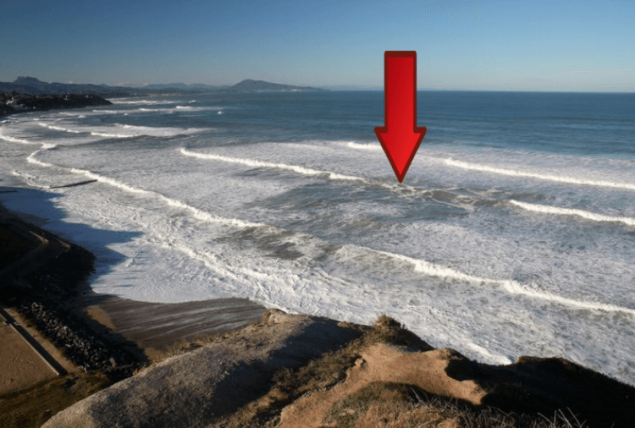
Everything happens unexpectedly: there you swam from the shore, and then turned back, but it does not work ... you sail hard, but staying in the same place or even move away even farther. All attempts are unsuccessful, power running out, and you are close to panic ...
To begin, it is important to understand the principle of the rip. This is a type of sea and ocean currents, directed at right angles to the shore and in the process of forming a discharge stream tide water in the sea.
The most dangerous is the rip current in shallow seas with a gently sloping beach which is framed by sand bars, spits and islets (the Sea of Azov, and so on. N.). In these places at low tide return the body of water in the sea prevent sand bars. The water pressure in the narrow strait that connects the estuary with the sea, increases many times. In the end, it formed a fast stream in which the water is moving at a speed of 2, 5-3, 0 m / s.
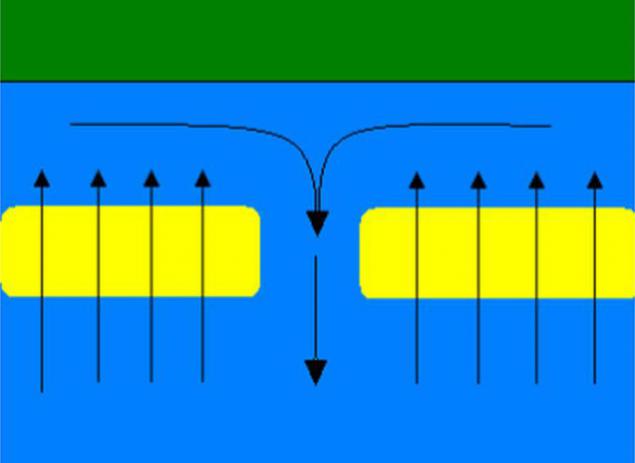
These "corridors" appear in different places on the shore during high tide. Waves rolled and bring the water mass, and then go at different speeds in the sea or ocean, forming a reverse flow. This is observed in areas that are prone to tides. <
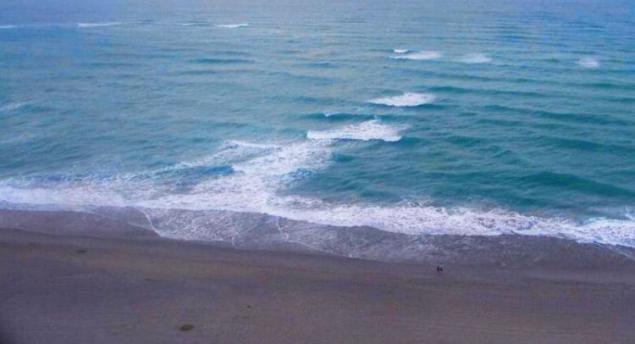
In this picture is not so noticeable bubbling streams of water, but is clearly visible for the very people who have got into it: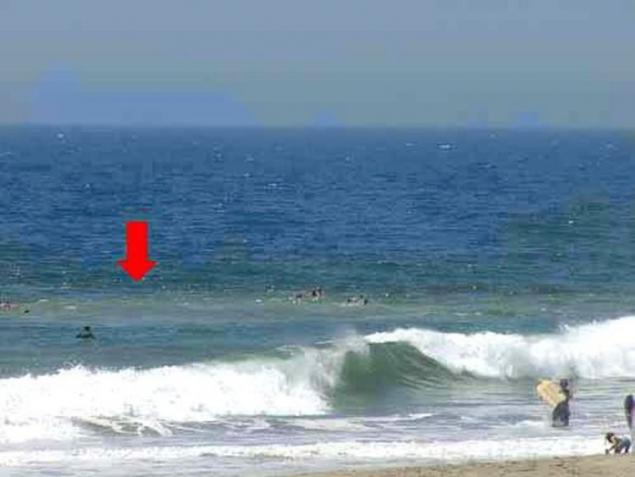
Most often, the width of rip 2-3 m, and the flow velocity - 4.5 km / hour, which is not opasnym.
But occasionally there are rips up to 50 m, a length of 200-400 meters and speeds up to 15 km / h! This happens much less frequently. But it happens!
How to learn to distinguish the places where there are rips in order not to fall into them? First of all Pay attention to the following characteristic features:
Visible channel boiling water perpendicular to the shore
In the coastal areas are a different shade of the water: for example, all around the pale blue or greenish, and some white area. Areas with foam, moving seaweed and bubbles, which move from the shore to the open sea;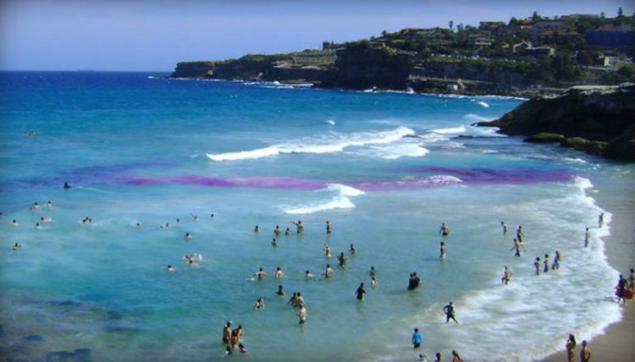
In a continuous strip of tidal waves has a 5-10 meter gap;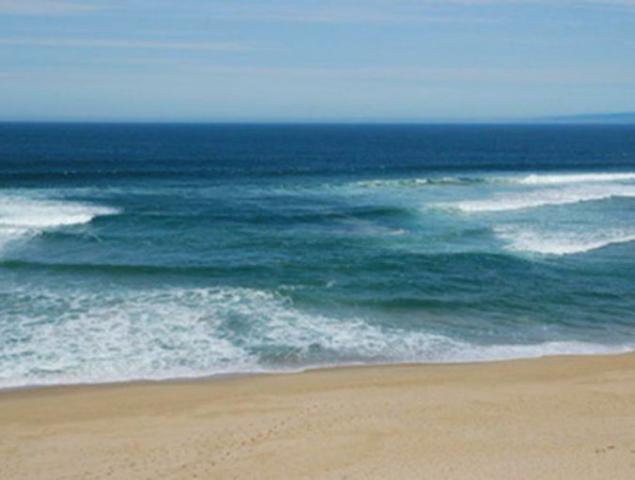
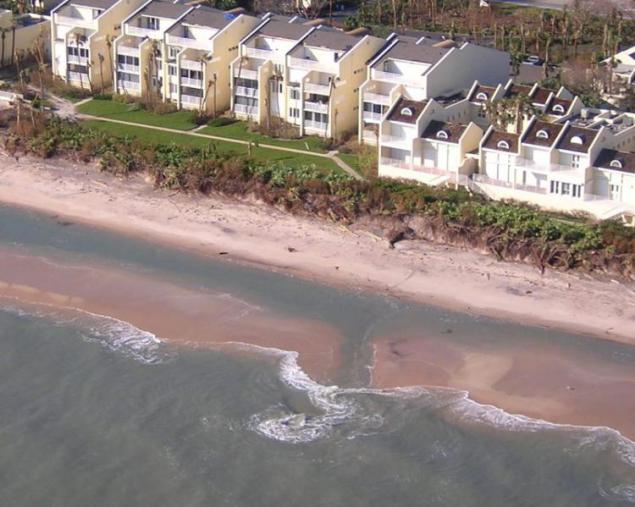
If you notice something out of the above, never swim in this place. But the danger is that 80% of sudden rips apparently not manifest itself. It is in their "tenacious paws" gets most tourists. Identify these areas may only professional rescuers.
It is important to remember that the rip current often occur near the shore, so they are able to tighten even people standing in water up to his waist or chest. And if swimmers a chance to save big, then people who can not swim, they are critically low. Therefore, do not swim alone and do not go to those places that seem suspicious.
Prefer lively beaches where lifeguards are on duty.

And always pay attention to the red flags and signs on the beach in places where swimming is strictly prohibited. This is not a joke!
And the most important point! How to behave to those who fell in this for?
Conduct in Demolition techenii
1. Overcome panic! Pull yourself together, because people who know the rules of conduct in ripping are saved in 99% of cases.
2. Keep the power! No need to go all out to row against the tide, losing energy reserves. You need not swim to the shore and to the side, parallel to the beach. If you rip a narrow (up to 5 m), you will very quickly from it select.
3. Analyze! If you are rowing on the rules - to the side and can not get out, then rip wide (20 m or more). Then just stop wasting time and panic! The reverse flow is usually short-lived and after 3-4 minutes it will stop. Then sail 50-100 meters away, and only then return to the truce to shore.
A panic can help you avoid the following facts:
Rip did not carry off you at the bottom. The most common rip current are short and at a high speed moving the top layer of water that supports the floating objects. Rip not very wide. Its width does not exceed 50 meters. And in most cases is only 10-20 m. As a result, swim along the shore just 20-30 meters, you will notice that emerged from the rip. The length of the rip is limited. for quite rapidly waning, "Tyagun" loses its force, where the waves reach a peak and begin to break. On the surfer slang, it's called "line up» (line up). Just going there all surfers preparing to conquer the incoming waves. Usually "line up" is no more than 100 meters from the shore.
It is a very dangerous, but a little-known phenomenon - rip current, which is often called "basals" and "ripami" (eng. - Rip current). Rip current is present in all corners of the planet and in the Gulf of Mexico, and in the Black Sea and on the island of Bali. With these insidious ripami can not handle not only ordinary people but also top-class swimmers who do not know how to behave in this situation.

Everything happens unexpectedly: there you swam from the shore, and then turned back, but it does not work ... you sail hard, but staying in the same place or even move away even farther. All attempts are unsuccessful, power running out, and you are close to panic ...
To begin, it is important to understand the principle of the rip. This is a type of sea and ocean currents, directed at right angles to the shore and in the process of forming a discharge stream tide water in the sea.
The most dangerous is the rip current in shallow seas with a gently sloping beach which is framed by sand bars, spits and islets (the Sea of Azov, and so on. N.). In these places at low tide return the body of water in the sea prevent sand bars. The water pressure in the narrow strait that connects the estuary with the sea, increases many times. In the end, it formed a fast stream in which the water is moving at a speed of 2, 5-3, 0 m / s.

These "corridors" appear in different places on the shore during high tide. Waves rolled and bring the water mass, and then go at different speeds in the sea or ocean, forming a reverse flow. This is observed in areas that are prone to tides. <

In this picture is not so noticeable bubbling streams of water, but is clearly visible for the very people who have got into it:

Most often, the width of rip 2-3 m, and the flow velocity - 4.5 km / hour, which is not opasnym.

But occasionally there are rips up to 50 m, a length of 200-400 meters and speeds up to 15 km / h! This happens much less frequently. But it happens!
How to learn to distinguish the places where there are rips in order not to fall into them? First of all Pay attention to the following characteristic features:
Visible channel boiling water perpendicular to the shore

In the coastal areas are a different shade of the water: for example, all around the pale blue or greenish, and some white area. Areas with foam, moving seaweed and bubbles, which move from the shore to the open sea;

In a continuous strip of tidal waves has a 5-10 meter gap;


If you notice something out of the above, never swim in this place. But the danger is that 80% of sudden rips apparently not manifest itself. It is in their "tenacious paws" gets most tourists. Identify these areas may only professional rescuers.
It is important to remember that the rip current often occur near the shore, so they are able to tighten even people standing in water up to his waist or chest. And if swimmers a chance to save big, then people who can not swim, they are critically low. Therefore, do not swim alone and do not go to those places that seem suspicious.
Prefer lively beaches where lifeguards are on duty.

And always pay attention to the red flags and signs on the beach in places where swimming is strictly prohibited. This is not a joke!

And the most important point! How to behave to those who fell in this for?
Conduct in Demolition techenii

1. Overcome panic! Pull yourself together, because people who know the rules of conduct in ripping are saved in 99% of cases.
2. Keep the power! No need to go all out to row against the tide, losing energy reserves. You need not swim to the shore and to the side, parallel to the beach. If you rip a narrow (up to 5 m), you will very quickly from it select.
3. Analyze! If you are rowing on the rules - to the side and can not get out, then rip wide (20 m or more). Then just stop wasting time and panic! The reverse flow is usually short-lived and after 3-4 minutes it will stop. Then sail 50-100 meters away, and only then return to the truce to shore.
A panic can help you avoid the following facts:
Rip did not carry off you at the bottom. The most common rip current are short and at a high speed moving the top layer of water that supports the floating objects. Rip not very wide. Its width does not exceed 50 meters. And in most cases is only 10-20 m. As a result, swim along the shore just 20-30 meters, you will notice that emerged from the rip. The length of the rip is limited. for quite rapidly waning, "Tyagun" loses its force, where the waves reach a peak and begin to break. On the surfer slang, it's called "line up» (line up). Just going there all surfers preparing to conquer the incoming waves. Usually "line up" is no more than 100 meters from the shore.
After her divorce from izmenschitsa wife Male in their possessions literally
Tiny Hotels in Japan - the cheapest and close Accommodation in Tokyo
























